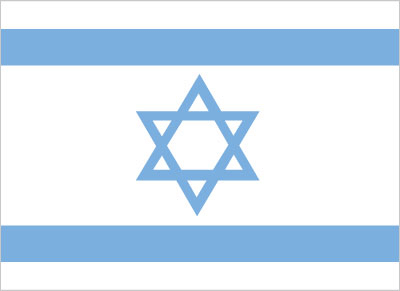
Israel has a technologically advanced market economy. Cut diamonds, high-technology equipment, and pharmaceuticals are among the leading exports. Its major imports include crude oil, grains, raw materials, and military equipment. Israel usually posts sizable trade deficits, which are covered by tourism and other service exports, as well as significant foreign investment inflows. Between 2004 and 2011, growth averaged nearly 5% per year, led by exports. The global financial crisis of 2008-09 spurred a brief recession in Israel, but the country entered the crisis with solid fundamentals, following years of prudent fiscal policy and a resilient banking sector. In 2010, Israel formally acceded to the OECD. Israel's economy also has weathered the Arab Spring because strong trade ties outside the Middle East have insulated the economy from spillover effects. The economy has recovered better than most advanced, comparably sized economies, but slowing demand domestically and internationally, and a strong shekel, have reduced forecasts for the next decade to the 3% level. Natural gas fields discovered off Israel's coast since 2009 have brightened Israel's energy security outlook. The Tamar and Leviathan fields were some of the world's largest offshore natural gas finds this past decade. The massive Leviathan field is not due to come online until 2018, but production from Tamar provided a one percentage point boost to Israel's GDP in 2013 and is expected to contribute 0.5% growth in 2014. In mid-2011, public protests arose around income inequality and rising housing and commodity prices. Israel's income inequality and poverty rates are among the highest of OECD countries and there is a broad perception among the public that a small number of "tycoons" have a cartel-like grip over the major parts of the economy. The government formed committees to address some of the grievances but has maintained that it will not engage in deficit spending to satisfy populist demands. In May 2013 the Israeli government, in a politically difficult process, passed an austerity budget to reign in the deficit and restore confidence in the government's fiscal position. Over the long term, Israel faces structural issues, including low labor participation rates for its fastest growing social segments - the ultra-orthodox and Arab-Israeli communities. Also, Israel's progressive, globally competitive, knowledge-based technology sector employs only 9% of the workforce, with the rest employed in manufacturing and services - sectors which face downward wage pressures from global competition.
$273.2 billion (2013 est.)
country comparison to the world: 49
$264.5 billion (2012 est.)
$255.9 billion (2011 est.)
3.3% (2013 est.)
country comparison to the world: 104
3.4% (2012 est.)
4.6% (2011 est.)
$36,200 (2013 est.)
country comparison to the world: 37
$34,300 (2012 est.)
$34,000 (2011 est.)
agriculture: 2.4%
industry: 31.2%
services: 66.4% (2013 est.)
21%
note: Israel's poverty line is $7.30 per person per day (2012)
1.7% (2013 est.)
country comparison to the world: 55
1.7% (2012 est.)
3.493 million (2013 est.)
country comparison to the world: 97
agriculture: 1.6%
industry: 18.1%
services: 80.3% (2012 est.)
5.8% (2013 est.)
country comparison to the world: 56 6.8% (2012 est.)
high-technology products (including aviation, communications, computer-aided design and manufactures, medical electronics, fiber optics), wood and paper products, potash and phosphates, food, beverages, and tobacco, caustic soda, cement, construction, met
5.5% (2013 est.)
country comparison to the world: 52